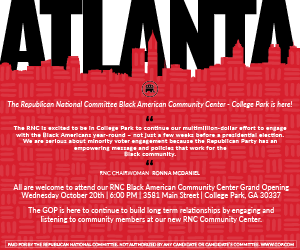on
COLUMBIA, SOUTH CAROLINA

“The first of its kind on any of the nation’s state house grounds,” the African-American History was sculptured by Ed Dwight of Colorado and dedicated March 29, 2001. This monument traces African-American history from the Middle Passage, to the fight for freedom in the Civil War, the struggle for civil rights and emergence into mainstream America. Among the 12 scenes are images that depict a family on the auction block, slaves working in a rice field, men and women celebrating the Emancipation Proclamation, the Jim Crow era, the Northern migration, and images of African Americans today pioneering in such fields as engineering, law education, sports, politics and space exploration. At the base of the monument’s obelisk are four rubbing stones from regions of Africa where slaves were captured – Senegal, Sierra Leone, the Republic of Congo and Ghana.
discoversouthcarolina.com
TALLAHASSEE, FLORIDA

As the first city in Florida to hear the Emancipation Proclamation, Tallahassee’s storied history dates back to the plantation lifestyle, moving forward into the post-slavery world where the accomplishments of prominent black figures sparked the development of thriving African-American communities.
With the help of the formerly enslaved and local civic leader John G. Riley, newly freed slaves settled in Frenchtown and Smokey Hollow, neighborhoods that became a hub for African-Americans looking to establish a sense of place in Florida’s capital city. Boasting residents like Ray Charles and jazz greats Nat and Cannonball Adderley, these communities played a major role in Tallahassee’s growth and development.
Today, Riley’s former home in Smokey Hollow stands stately as a tribute to African-American’s fight for freedom — the last visible evidence of the once-thriving community. Erased by urban renewal in 1960 and now occupied by community center Cascades Park, Smokey Hollow’s rich heritage was revived with a village-like spiritual capstone in the signature park, featuring replicas of shotgun houses, a reflection pool, community vegetable gardens and a fully-restored barbershop — all designed by a committee of two dozen former Smokey Hollow residents.
In addition to the Riley Museum and Smokey Hollow, Tallahassee plays hosts to additional heritage sites and events, from the Southeast’s most extensive collection of ancient Ethiopian artifacts and Florida’s first organized black church to African dance performances and cultural festivals.
With so much to offer, Florida’s capital city remains the premier destination in which to absorb the abundant lessons culled from the state’s history.
visittallahassee.com
SELMA, ALABAMA

In Selma, Alabama, the Martin Luther King, Jr. Street Historic Walking Tour will take you to the iconic Edmund Pettus Bridge and the church where the legendary voting rights marches began. The tour is about a mile and a half long. In March 1965, a series of voting rights marches here caught the attention of the nation. The final one, led by Martin Luther King Jr., made it all the way to the state capital after a five-day trek. The first attempt was met with violent police resistance at the foot of the Edmund Pettus Bridge, an event that came to be known as “Bloody Sunday.” The route the marchers finally took to Montgomery is today preserved as the Selma to Montgomery National Historic Trail, a scenic byway you can drive by car.
selmaalabama.com
CHARLESTON, SC

The Gullah are a distinctive group of African Americans whose origins lie along the coasts of South Carolina and Georgia, as well as the adjacent sea islands. They live in small farming and fishing units, having formed a tightly knit community that has survived slavery, the Civil War, and the emergence of modern American culture.
Due to their geographic location and strong sense of community, the Gullah have been able to preserve more of their African cultural heritage than any other group of African Americans: they speak a creole language similar to the Krio of Sierra Leone, are skilled in the creation of African style handicrafts and enjoy a rich cuisine based primarily on rice. The origin and traditions of this group are an important piece of South Carolina’s historical puzzle. By exploring their history and development, one gains a fuller picture of South Carolina’s past.
The origin of the Gullah people is connected to the transatlantic slave-trade of the 17th and 18th centuries. In 1670, the first English-speaking settlement was established in South Carolina. The area chosen by settlers was a stretch of coastal plain and swampland known today as the Lowcountry. Due to the area’s semi-tropical climate and abundant rainfall, early colonists struggled to find a crop that would produce sufficient revenue for England. By 1700, however, settlers discovered that rice, an Asian import, was best suited for growth in South Carolina’s valley swamps.
Early attempts to capitalize on this discovery failed due to the ignorance of the intricacies involved in rice cultivation among South Carolina’s white planter population. White planters soon found that there was a great advantage in importing Africans from the traditional rice-growing region of West Africa to perform the arduous work. Realizing the growing demand for Africans from the “Rice” and “Windward” coasts — known today as Sierra Leone — slave traders made it a point to provide white planters in South Carolina with large numbers of captives from these areas for local markets. These traders even capitalized on the high prices typically asked for these particular Africans by advertising their origins in auction listings and newspapers. The resulting boom in the slave trade and rice cultivation made South Carolina one of the wealthiest colonies in North America. Charles Towne (now Charleston) became one of the most fashionable cities in the American colonies and a crown jewel in England’s colonial empire.
The development and preservation of the Gullah’s distinct African culture was aided by their unique slave conditions. The climate of the Lowcountry, Georgia, and the surrounding sea islands aided not only rice cultivation but also the spread of various tropical diseases. Maladies like malaria and yellow fever affected all inhabitants in the Lowcountry, including enslaved Africans. Whites were most vulnerable to them, and as a result, the white planters customarily vacated their farms and moved away from the rice fields during the humid seasons when disease was rampant. Due to their absence, plantations were generally run by a few white managers and trusted, enslaved Africans known as “drivers.” The disease cycle kept the white population of South Carolina low while more and more Africans were imported each year. By 1708, there was a black majority in the colony. The great influx of new Africans and the lack of English cultural influence upon their lives directly assisted the creation and preservation of a distinctly African set of traditions. These enslaved Africans, therefore, continued to share many parts of the languages, rituals and customs drawn from their ancestral communities in Africa. Many Gullah arts and crafts are indistinguishable from those found in West Africa. For example, Gullah artisans skillfully create wooden mortars and pestles, rice “fanners,” clay pots, and other pieces closely connected to Sierra Leone. Most importantly, tourists in South Carolina and Georgia can still bear witness to women continuing the tradition of basket making in local markets and roadsides. These beautiful pieces, known as sweetgrass baskets, are closely connected to the Sierra Leonean shukublay.
Gullah religious systems and beliefs, while derived from the Christianity practiced by their former white masters, are also evidence of a distinctly African tradition. While adhering to Christian doctrine, the Gullah practice a faith immersed in communal prayer, song, and dance. Many also continue to hold traditional African beliefs. Witchcraft, which they call wudu or juju, is one example that can be traced to the country of Angola. Some Gullah believe that witches can cast a spell by putting powerful herbs or roots under a person’s pillow or at a place where he or she usually walks. There are also special individuals known as “Root Doctors” that serve to protect individuals from curses and witchcraft.
Today, the Gullah people still live and practice their lifestyle in the areas that were once home to their ancestors. Despite encroachment of modern American traditions and increased expansion into their homeland, these special people continue to provide an important glimpse into South Carolina’s past. When visiting our great city, visit our local museums and research centers and learn more about the traditions of the Gullah. By increasing awareness and education about the Gullah, we aid in the preservation of their unique heritage.
www.africanamericancharleston.com/gullah.html
Join our email list to stay connected.






You must be logged in to post a comment Login